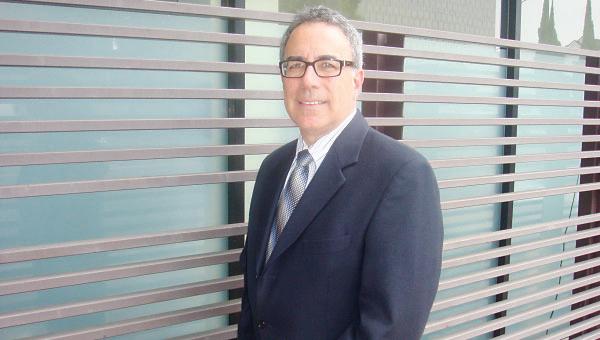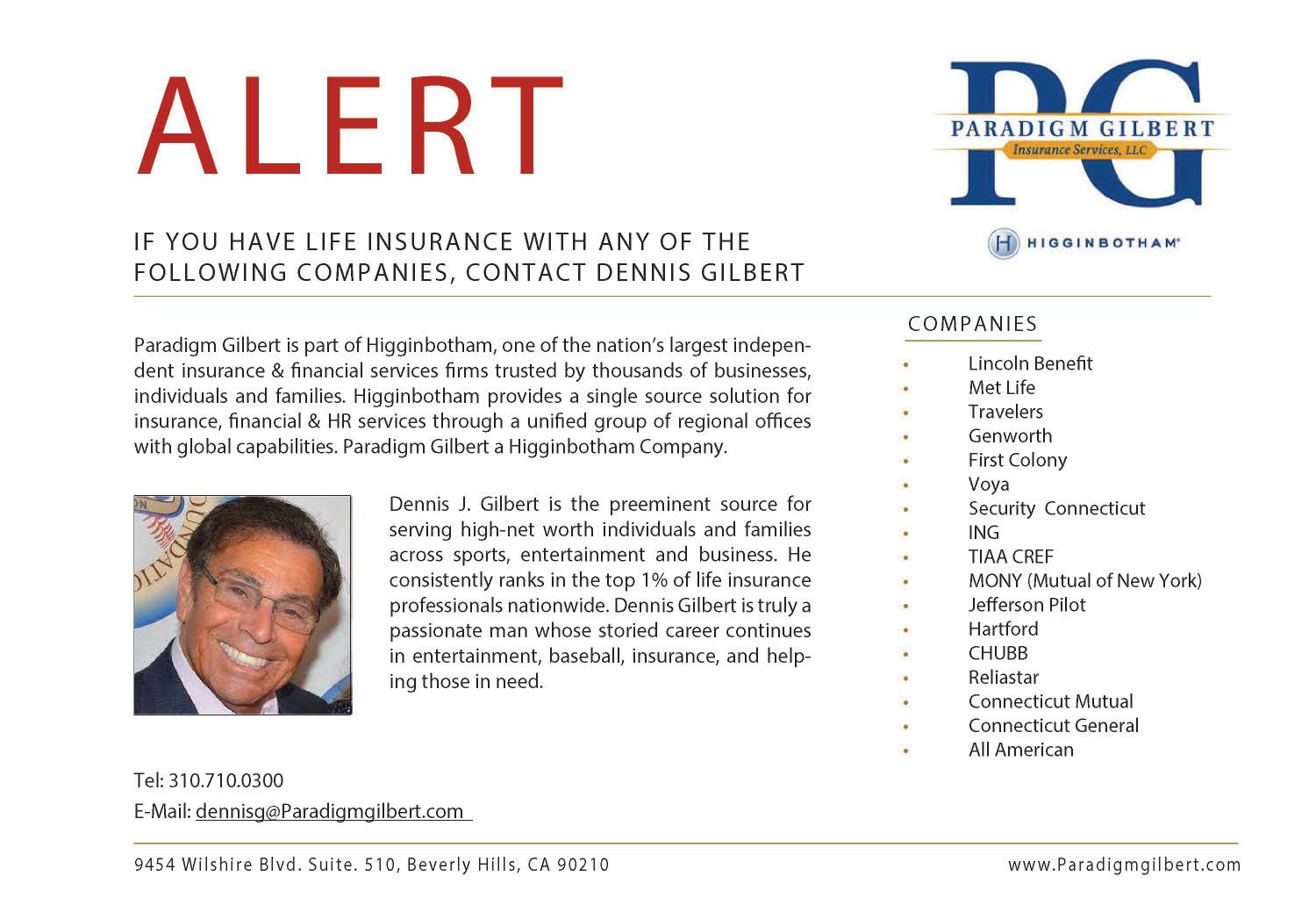
14 minute read
Health and Wellness
Cedars-Sinai Cautions Against Letting Guard Down After Vaccines
BY BIANCA HEYWARD
Michael Ben-Aderet, M.D. Photo courtesy Cedars-Sinai The Centers for Disease Control and Prevention (CDC) released new guidelines for those who are fully vaccinated against COVID-19. Despite the temptation, it’s important to not throw out those masks just yet.
“This isn’t an invitation for a free-forall,” said Michael Ben-Aderet, MD, associate medical director of Hospital Epidemiology at Cedars-Sinai. “The virus is not yet defeated. All of us need to remain vigilant but those who are completely vaccinated can enjoy a bit more freedom.” This week, the CDC declared it safe for vaccinated people to gather inside in small groups without wearing masks or observing social distancing. Those who are fully vaccinated can also safely participate in small indoor, unmasked gatherings with those who aren’t vaccinated, but considered low risk. For example, vaccinated grandparents can now safely visit grandchildren.
“That’s a big deal,” Ben-Aderet said. “It’s really allowing people to have meaningful connections that they’ve put off for so long.”
These guidelines apply only to people who are fully vaccinated, meaning at least two weeks have passed since receiving the second dose of a two-dose vaccine from Moderna or Pfi zer/BioNTech, or a single dose of the Johnson & Johnson vaccine. According to the CDC, the two-week time frame gives the body a chance to build up the full immunity the vaccines provide.
The agency didn’t give specifi c guidelines regarding what constitutes as a “small gathering.”
However, Ben-Aderet advises that the more important issue is being mindful about who is in attendance.
“It’s really meant to just add to the conversation about risk,” Ben-Aderet said. “We know that if you are a vaccinated person, you are at a very low risk of getting COVID. You are at a very low risk of shedding COVID. But these low risks don’t mean no risk.”
“The whole reason for all of us to get vaccinated is so that we can resume our lives safely, without leading to another surge like what we experienced in December and January,” Ben-Aderet said. “There’s really good evidence that there is a certain degree of safety conferred by the vaccines and there’s no reason people shouldn’t take advantage of that.”
Those who are fully vaccinated still need to wear face coverings, maintain physical distancing, and stay outdoors if they are visiting someone who is immunocompromised, has active cancer, is pregnant, or is part of another group considered at high risk of developing severe COVID-19.
And everyone, vaccinated or not, is still advised to wear a face mask and maintain at least six feet of distance from others when in public, and to avoid large gatherings. CDC travel advisories remain in place.
The CDC issued the guidance in an eff ort to entice more people to get vaccinated, and to allow those who are vaccinated to begin to resume their normal lives, Ben-Aderet said.
As data comes in that illustrates the effi cacy of the vaccination in preventing the spread of COVID-19 in public settings, the overall vaccination rate increases. “This is an important fi rst step,” he said, “but it’s defi nitely not the fi nal step.”


Mayor Lester Friedman (Cabinet Meeting continued from page 1) To allow restaurants the opportunity to recoup the cost of the structure, Council has approved that the tent be in place through the end of the year. Friedman also announced upcoming plans to reopen restaurants on the ground fl oor of the Maybourne Beverly Hills.
“In terms of the robbery that occurred at Il Pastaio. We know there have been several of these types of criminal activities in the region recently, particularly on Melrose Avenue, and it fi nally hit Beverly Hills. This was an event that could not have been prevented. I just want everybody to know that our police department did, in fact, respond within 91 seconds of the fi rst call that was logged at the 911 center,” said Friedman.
He added, “Every call that comes into the call center is logged automatically by the computer. When the operator sends a response to the police department to dispatch, that is logged. When the car leaves the station, that is logged. And when it arrives on scene, that is logged. So, there was a very quick response. The criminals did get away. There are very, very, positive leads that our police department has, and they are following up with it.”
In response to concerns regarding callers receiving a busy signal when dialing 911, Friedman said, “over 300 calls were coming in on the same event that occurred, and it jammed the lines. But the dispatch occurred way before those calls and people were placed on hold.”
The issue of 911 call wait times will be addressed during the March 16 City Council Study Session and Regular Meeting.
“Since this is my last cabinet meeting as mayor (he still has another year in his City Council term) I want to thank everybody,” Friedman said. “We say this over and over again, but the work that gets done, the really hard work, is at the commission level. It's presented to us as a council in a nice package and generally, we accept what the commission says. Occasionally, we go in a diff erent direction. But no matter what we do, it's always appreciated.”
Architecture Commission
At its Feb. 17 meeting, the Architecture Commission approved a request related to a temporary art installation on 300 North Rodeo Drive by Van Cleef & Arpels. The applicant requested a temporary installation of a three-dimensional graphic that would be projected on the façade of the retail building. The installation is proposed to be active from March 19, 2021 to June 2, 2021.
Chair Sheri Hirschfeld shared that the Commission’s Restaurant Subcommittee is also reviewing design plans for a new restaurant, Impasta, which will be taking over the former Roxbury Cafe space at 459 North Roxbury Drive.
Arts & Culture Commission
The Arts & Culture Commission has begun distributing the Art Walk brochure and continues to work on the installation of Ai Weiwei’s “Iron Root” and Alexandra Nechita’s “Love Anatomy.” Co-chair Deborah Frank shared that the Arts and Culture website is slated be complete in the spring and reminded residents that the city continues to off er an array of virtual arts programming online.
The Arts and Culture online workshops will also have new sessions beginning March 22 through May 28.
Charitable Solicitations Commission
During their March meeting, Charitable Solicitations Commissioners will appoint two members to serve on the Community Assistance Grant Fund ad hoc committee with the Human Relations Commission. Commissioners will be tasked with reviewing the fi scal status of each applicant.
Cultural grants applicants must be current Beverly Hills organizations that have demonstrated a history of exemplary cultural opportunities that respond to the community needs.
Cultural Heritage Commission
Last week, the City Council approved three Golden Shield nominations: Nate ‘N Al’s Delicatessen, Gearys Beverly Hills and the site of the former Gershwin residence. The next Cultural Heritage Commission meeting will be held on April 14, during which six more Golden Shield nominees will be reviewed before being presented to the City Council.
Design Review Commission
The commission is conducting interviews for one upcoming opening, as Commissioner Ilona Sherman's term comes to an end on Dec. 31. Seven people have applied.
Health & Safety Commission
Health & Safety Commission Chair Cathy Baker reminded the public that the city's code enforcement department will continue to perform inspections at the city's tobacco retailers to ensure compliance with the new tobacco sales ban ordinance. Residents are encouraged to contact code compliance to report violations by calling 310-285-1119.
The California State Legislature passed Senate Bill 793 (Hill) – Flavored Tobacco Products in August 2020, which banned the sale of fl avored tobacco products in the state. The legislation was supposed to go into eff ect on Jan. 1 of this year. “However, the Secretary of State's offi ce has confi rmed that the minimum number of signatures has been collected to qualify the ban referendum to be on the ballot for Nov. 8, 2022 election,” said Baker.
Human Relations Commission
The Human Relations Commission reminds the public that Beverly Hills promotes positive human relations in all aspects of community life, inviting every member of the community to support an environment where stability, respect and responsible actions prevail.
“The commission has made our homeless initiative work plan a top priority for this year,” Chair Ori Blumenfeld said. “The initiative consists of an education component, designed to help the community learn more about homelessness and the services provided in the city, and an advocacy and innovation component to fi nd new ways to address homelessness through expanded services and partnerships.”
The ad hoc committee will be meeting in the coming weeks to review each of the 31 applications submitted for the community assistance grant fund.
Planning Commission
Planning Commission Chair Peter Ostroff relayed that the commission has been busy with their eff orts to develop a revised housing plan for the city.
“As you recall, we were given our target number of housing sites that we were obliged to identify was tentatively 3,096, which is about 25 percent of the market housing as well as the various categories of aff ordable housing,” Ostroff said. “We appealed that unsuccessfully.”
On April 8, the commission is holding an additional meeting to consider the supplemental environmental impact report for the One Beverly Hills project.
Public Works Commission
Public Works Commission Chair Chuck Alpert highlighted the commission’s continued work around sustainability, promoting the use of city tap water over bottled water to reduce use of single-use plastics. The commission has also set up a Drinking Water Outreach/Single-Use Plastics Ad-Hoc committee, which will continue to fi nd ways to reduce and possibly regulate the use of said materials.
The commission continues to monitor the upgrades being made to the water treatment plant, the transmission line, and the groundwater wells along La Cienega Boulevard that are being developed.
“We haven't produced any of our own city water since 2016,” Alpert said. “And so, these are major projects to get the city back in the water business so that we have water in case of an emergency.”
Recreation & Parks Commission
Recreation & Parks Commission Chair Susan Mishler detailed updates on a bevy of virtual library events, community programs and special events, including preschool and Adventure Camp, the city’s childcare program. Adventure Camp returned to Hawthorne Elementary school this week to provide afternoon programming.
This week, the Pickleball program also returned at both La Cienega Tennis Center and Roxbury Park. Library programs that are being presented virtually include Jim J’s Jukebox, discovering America’s music January book club, on March 18 and on March 22, editor Denise Hamilton will discuss her new book titled “Speculative Los Angeles” with contributors Francesca Lia Block, Lisa Morton, and Luis J Rodriguez.
Traffi c & Parking Commission
At the last Traffic and Parking Commission meeting on March 4, the commission discussed ongoing plans for Connect Beverly Hills, the fi rst in a series of streetscape plans the city launched in May of 2020. The “Connect Beverly Hills: Meet Me on Wilshire and La Cienega” project will develop a streetscape plan and design standards for Wilshire and La Cienega Boulevards.
The Traffi c and Parking Commission serve on the Project Advisory Committee (PAC) for Connect Beverly Hills, and reviewed designs for benches, trash cans, transit shelters, bicycle racks and more.
Chair Nooshin Meshkaty also relayed that the neighborhood Slow Streets program was approved by the City Council, giving residents the chance to request that their streets be designated as a “slow street.” The slow streets will still be open to local traffi c, deliveries and other services. A draft of the Complete Streets Plan is tentatively scheduled to be reviewed by the City Council at the March 16 Study Session.

(Planning Commission continued from page 1)
The State Department of Housing and Community Development (HCD) fi rst determines the housing needs in each region of California by examining population data. The agency also considers economic and demographic trends, overcrowding, and overpayment of rents and mortgages. The number that HCD calculates gets passed to a local regional planning agency—the Southern California Association of Governments (SCAG), in the case of Beverly Hills—that looks at more local data and distributes the total among its jurisdictions.
In 2019, as cities across California grappled with soaring rents and a homelessness crisis, HCD announced an ambitious goal of about 3.5 million new units over the new Housing Elements cycle. Southern California’s share of the load came out to 1.3 million units. For Beverly Hills: 3,096 units. In comparison, in the last housing cycle, Beverly Hills’ allotment was only three.
Although city staff advised that RHNA appeals were rarely granted, the City Council nonetheless instructed staff to fi le an appeal to SCAG requesting a reduction to 1,486 units. In total, 52 other jurisdictions in Southern California also fi led RHNA appeals. On Jan. 13, SCAG held a public hearing for the appeals, rejecting all but two, including that of Beverly Hills. However, as a result of the two partially successful appeals by Riverside County and the City of Pico Rivera, SCAG had to redistribute the units subtracted from their allotments. This increased Beverly Hill’s RHNA number by eight.
While the city is required to plan for a certain level of growth and take eff orts to facilitate it, the RHNA is “not a development mandate,” the staff report notes. Jurisdictions must ensure that bureaucratic hurdles like zoning and planning do not obstruct development, but they do not need to build housing or issue permits themselves. But, if the state determines that a jurisdiction has not done enough to foster development, it can withhold certifi cation of its General Plan. This results in loss of certain state funds, more frequent updates to the city’s Housing Element, and loss of control over housing project decisions.
Cities face similar penalties for not meeting their RHNA obligations. Jurisdictions will have to implement a streamlined review process to approve housing development projects.
At the March 11 meeting, commissioners heard the results of an online survey conducted as a part of its public outreach for the Housing Element process. The survey received responses from 81 people by March 2, the majority of whom live or work in the city. Most respondents have lived in Beverly Hills for 21 years or more, own their home, with an age range of 56 to 74 years old. Though a small sample, the staff report compiled for the hearing claims that “the results have provided insight into the various perspectives of community members regarding how or in what ways the city should accommodate future housing needs in Beverly Hills.”
Among the results, 70 percent of respondents answered that they were “very satisfi ed with their housing situation.” People who replied to the survey listed maintaining a diverse housing market and maintaining the character of existing neighborhoods as “very important.”
Lower down on the list of priorities, respondents indicated as their least important concerns: “ensuring that children who grow up in Beverly Hills can aff ord to live in Beverly Hills, providing shelters and transitional housing and services for the homeless, integrating aff ordable housing to create mixed-income neighborhoods, and establishing programs to help at-risk homeowners keep their homes.”
Most people who participated in the survey expressed support for greater density in mixed-use zones and multi-family residential zones, taking advantage of the future metro stations. Staff expect to release a second online survey by the end of March.
In addition to mixed-use zoning, the city hopes to meet its RHNA goals by incentivizing the construction of ADUs, additional structures that share a lot with a primary structure (like a guest house, for instance). Given the lack of vacant land in Beverly Hills, ADUs take advantage of the city’s large number of single-family residences. For HCD to count future ADUs toward the city’s RHNA requirement, the agency will evaluate ADU permitting trends and the extent to which city regulations encourage ADU development.
“I think that if we can at least meet or exceed the state standards, we will be demonstrating good faith to HCD in our efforts to accommodate to the overriding purpose of the Rena allocation,” said Commissioner Thomas Hudnut.
As the staff report notes, a scant nine ADUs were permitted in the city in 2020. At that rate, the city would barely scratch two percent of its RHNA allocation. But the city’s current ADU regulations adopted in 2017 have already become outdated. The staff report suggested updating the ADU ordinance and adding additional incentives to boost RHNA credit.
Some recommended incentives include increasing the maximum height from 16 feet (which prevents two-story ADUs) to 22 feet and two stories in the Central Area, and 18 feet and two stories in the Hillside Area. Staff also recommended streamlining the review process and reducing the parking requirements.





